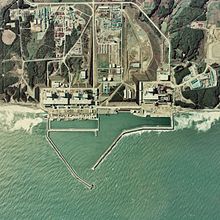Japan:Nuclear Meltdown Fears With Fourth Explosion; Radiation Leak Threat
By RT
With a fourth explosion rocking the Fukushima nuclear facility on Tuesday and radiation levels at the facility gate increasing hundredfold, fears of a meltdown in Japan dramatically increase.
In his televised address on Tuesday, Japanese Prime Minister Naoto Kan announced that radiation had spread from the three damaged reactors in the Fukushima nuclear plant. A no-fly zone has been imposed over the nuclear plant. The prime minister has also asked people living within 30 kilometers of the Fukushima complex to stay indoors to avoid potential health risks from radiation.

The latest, fourth, hydrogen explosion at Unit 4 of the Fukushima facility resulted in a massive fire at the spent fuel storage pond, which was supposed to contain over a thousand of spent fuel rods at the moment. The fire was eventually put out. Unit 4 itself was not operational, but the hydrogen is believed to have released radiation, the Associated Press reports.
The explosion followed another blast, which hit the facility’s Unit 2 just hours earlier. The country’s nuclear safety agency has announced that it suspects the explosion may have damaged the reactor’s container. AP has quoted an agency spokesperson, Shinji Kinjo, as saying that “a leak of nuclear material is feared.'”
The operator of Fukushima Dai-Ichi nuclear power plant reported earlier that the cooling system of Unit 2 was fully down, which could lead to overheating of the unit and an explosion similar to those that occurred on Friday and Monday. They admit meltdown is a possibility following the four explosions at the complex.
As the level of cooling liquid continued to lower at the Unit 2 of the Fukushima-1 nuclear power plant, the reactor’s fuel rods became partially exposed and therefore even less cooled, informed Kyodo news network. The spokesman for the Fukushima government, Masato Abe, stated that Unit 2’s fuel rods “were briefly exposed.”
Japanese Chief Cabinet Secretary Yukio Edano confirmed on Tuesday that the radiation levels near the stricken plant on the northeast coast skyrocketed to 400 millisieverts (mSv) an hour, thousands of times higher than readings before the blast, according to Reuters. That would be three years worth of naturally occurring radiation being emitted within a single hour. The wind blowing around the plant is Tokyo oriented.
Radiation dosage meters located in Tokyo have registered a radiation increase, but the level is still regarded as safe, Tokyo authorities are reported as saying by Kyodo news agency.
The French embassy in Tokyo warns that the capital could be hit by low-level radioactive wind within ten hours.
The explosions at the nuclear facilities since Friday’s earthquake and tsunami have damaged the cooling systems. Several people have been injured in the blasts, while more than 150 people have been exposed to radiation.
The National Police Agency said that by Tuesday over 2,400 people were confirmed dead while some 3,600 were missing, but many unidentified bodies have been detected in quake-hit coastal areas, inevitably raising the death toll, as cited by AP.
Fission out of control
The grim reality is that excessive radiation levels are being detected further and further from the Fukushima-1 nuclear power plant and it is clear the situation is out of control says Dr. Robert Jacobs from the Hiroshima Peace Institute. He adds that its consequences will be devastating for communities and people’s health in Japan.
“There is a growing distress among people in Japan that the information we are receiving is not informing us to the extent that we would like. That does not reduce panic, it just makes people more and more uncertain. They believe they cannot fully trust the information they are being given,” he said.
Placing nuclear power plants in earthquake zones really increases dangers but the main threat of nuclear power as an energy source remains the danger from spent fuel and materials, believes Jacobs.
